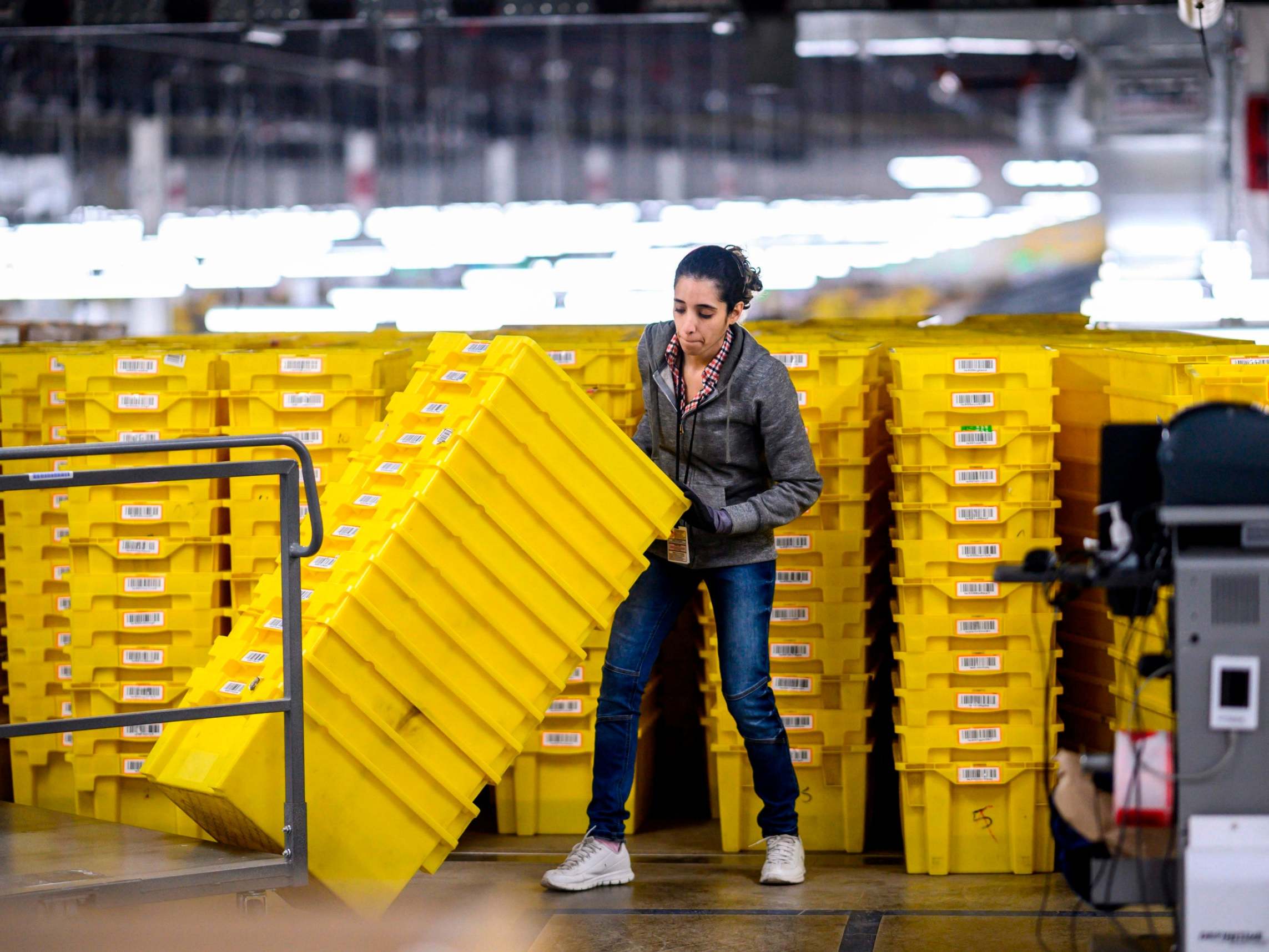US employment growth accelerates with 225,000 new jobs in January
Coronavirus 'has the potential to derail' gains, warns economist

Your support helps us to tell the story
From reproductive rights to climate change to Big Tech, The Independent is on the ground when the story is developing. Whether it's investigating the financials of Elon Musk's pro-Trump PAC or producing our latest documentary, 'The A Word', which shines a light on the American women fighting for reproductive rights, we know how important it is to parse out the facts from the messaging.
At such a critical moment in US history, we need reporters on the ground. Your donation allows us to keep sending journalists to speak to both sides of the story.
The Independent is trusted by Americans across the entire political spectrum. And unlike many other quality news outlets, we choose not to lock Americans out of our reporting and analysis with paywalls. We believe quality journalism should be available to everyone, paid for by those who can afford it.
Your support makes all the difference.Jobs growth in the United States accelerated and wage growth picked up in January, sending a signal that employers may have responded positively to the greater certainty brought by the first phase of the US-China trade deal.
Non-farm payrolls rose by 225,000 in the month against analysts’ forecast of a gain of 160,000, although the higher increase was also likely to have been partly due to milder weather. Notable job gains occurred in construction, health care, and transportation and warehousing, the Bureau of Labour Statistics said on Friday.
The unemployment rate ticked up slightly to 3.6 per cent. It had been expected to remain at the 50-year low of 3.5 per cent recorded in December.
There was some sign of wage pressure with annual average earnings clicking up to 3.1 per cent from 3 per cent, although analysts said this was well below where they would expect it to be given the apparent tightness of the jobs market.
“Jobs continue to be created in decent numbers, but there is little wage inflation threat despite apparently tight labour markets,” said James Knightley, chief international economist at ING bank.
“Consequently, with the Federal Reserve seemingly content with its current monetary policy stance, the prospect of any near-term interest rate moves seems limited.”
The positive tone of the headlines figure was also offset by revisions to back data that showed the economy created 514,000 fewer jobs between April 2018 and March 2019 than originally estimated, which may indicate the US-China trade war had a bigger impact on the labour market than thought.
It was the largest downgrade to payrolls over a 12-month period since 2009 and suggests that job creation could slow significantly down this year.
Furthermore, employment gains are likely to slow or be reversed this month as the coronavirus, which has killed hundreds of people in China and infected thousands around the world, has disrupted supply chains especially for technology companies such as Apple.
“We have to be a little wary given the coronavirus outbreak has the potential to derail this story,” Mr Knightley said. “The threat that the coronavirus outbreak poses in an environment of already subdued global growth underlines the potential for medium-term US economic weakness.”
The president of the World Bank warned earlier this week that the US and global economies would be hit in the first half of the year as precautionary shutdowns of factories and plane flights because of the impact on supply chains.
Many economists believe that an initial negative impact from the virus on global growth will be offset by a rebound once the spread of the infection is contained.
On Friday UBS, the Swiss bank, said its economists forecast that Chinese GDP growth would slow to 3.8 per cent in the first quarter but rebound over the following nine months to bring down 2020 full year GDP growth to 5.4 per cent versus 6.1 per cent last year.
UBS’s Big Data Nowcasting index, which attempts to capture changes in the economy ahead of hard data, indicated that compared with previous Lunar New Year periods, spending was lower although not significantly, exports were holding steady but post-holiday spending was below trend.
Join our commenting forum
Join thought-provoking conversations, follow other Independent readers and see their replies
Comments